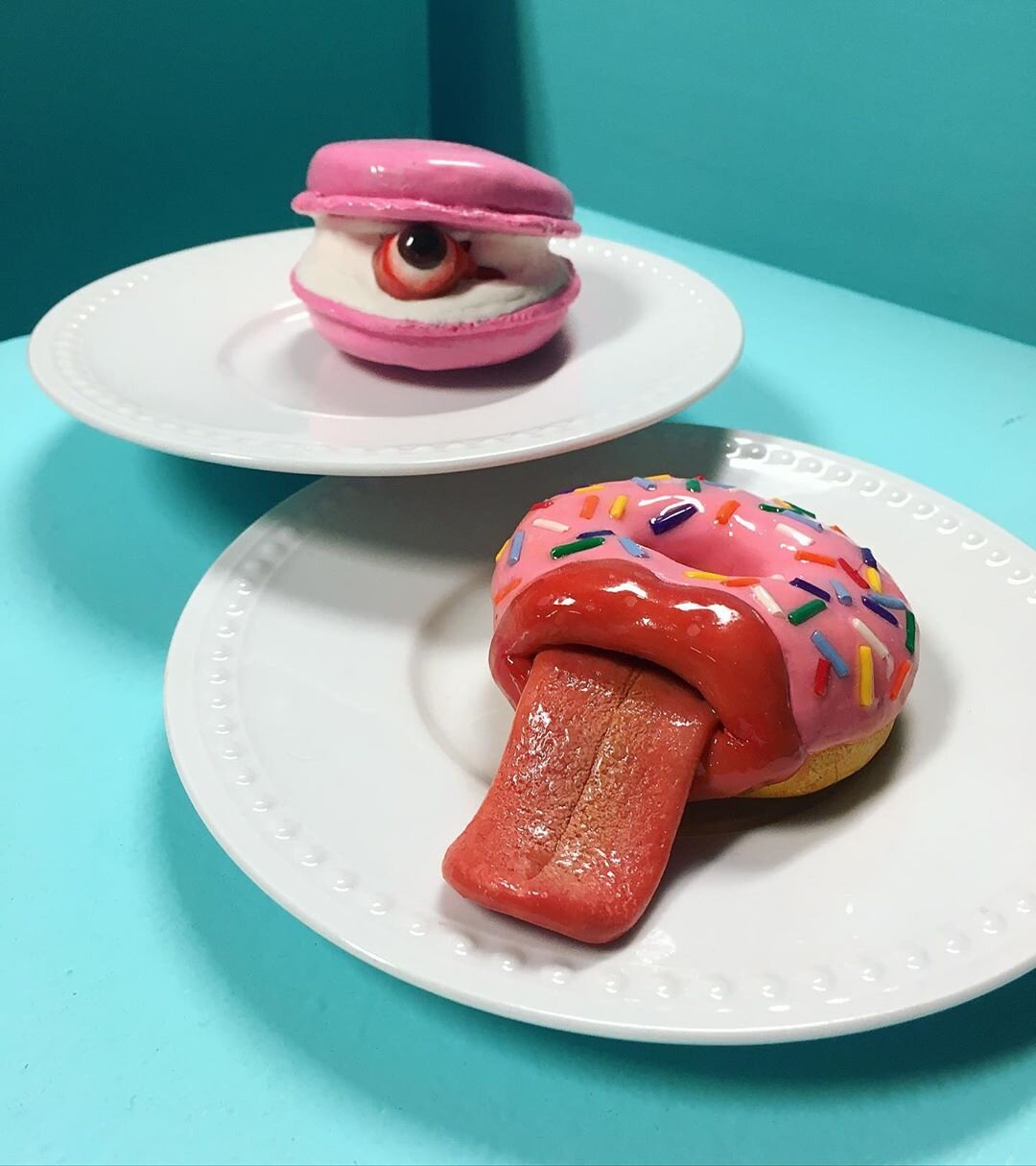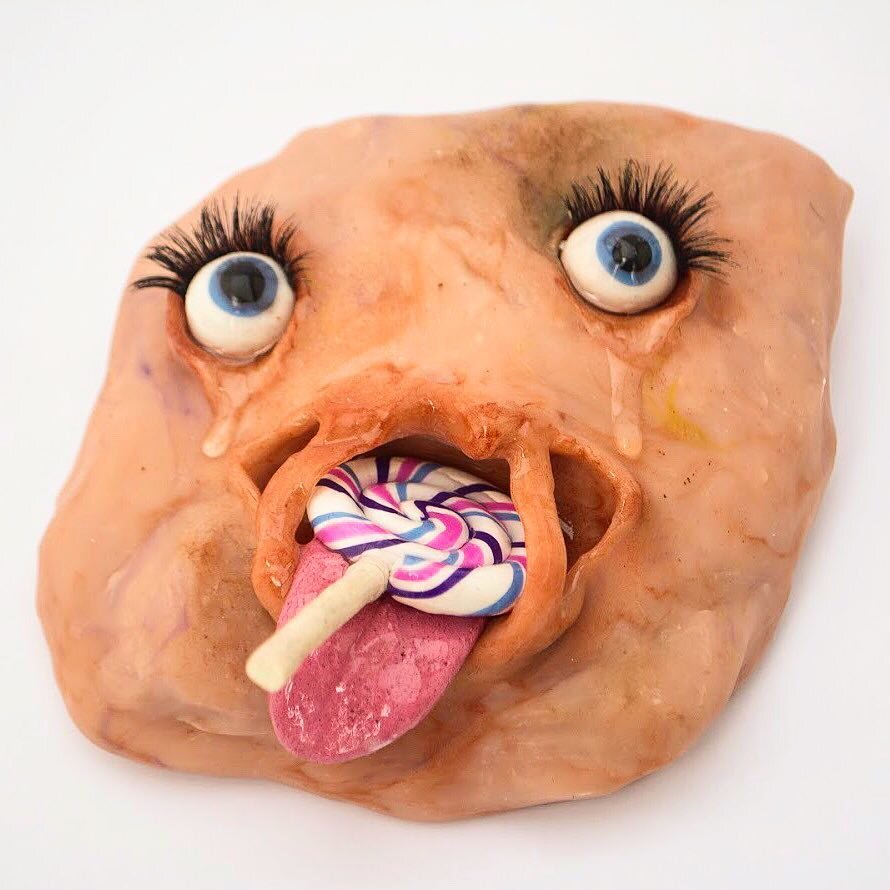Regan Henley
Photo provided by, Regan Henley
Meet Regan Henley
The visual arts are blending with the digital world fast and hard people! Multimedia artist Regan Henley is here giving her two cents on the whole sitch.
The ceramicist and digital artist makes quirky work dealing with heavy topics. Below, we discuss the difference between 2D and 3D work, the inspiration behind her “Empty Calorie” series, and the catharsis of making emotional work.
A self-portrait by, Regan Henley
Would You Rather
have a perfect photographic memory, or be able to see up to one day into the future?
I think I’d prefer to see into the future. That would save me a lot of time troubleshooting.
Some questions with Regan Henley
What is your favorite dinosaur? Why is it your favorite?
I haven’t thought much about dinosaurs in a while, but in the second grade, I made a diorama and sculpted a Seismosaurus, which I chose because it’s just a really long dinosaur. That’s it. I just liked how it was just really long, head to tail.
What relationships do you draw between working two-dimensionally and three-dimensionally? Do you prefer one medium over the other?
I've primarily made screen-based and digital work, but the more I’ve started working 3-dimensionally I’ve noticed people are able to respond to work that is physically in front of them much differently than work on a screen. As in, viewers often feel comfortable processing and interacting with the work with less trepidation, at least in my experience. Especially for people who don’t look at a lot of art, there’s sometimes an accessibility that comes from having a physical form in front of you. I’m still trying to figure this all out myself. I could never just choose one medium though, I feel it depends wholly on what I’m trying to say at the moment.
What was the inspiration behind the “Empty Calorie” series?
While most of my work is about death and grief, this series takes a more comical, playful look at the literal body in all its degradation and strangeness. When you spend so much time thinking about mortality, you start to begin looking more objectively at the body as a vessel in active change and decay. The food we eat, and the way we adorn our bodies all become a part of this. The work is inspired by a cultural obsession with the body and how not unlike it is to the fetishization of food, especially beautifully crafted sweets.
How has the digital space influenced your more tactical, sculptural practice?
I really feel that working sculpturally and digitally are two sides of the same coin in my practice now. Doing either one for too long is straining, and it's freeing to get a break from the screen to sculpt, and vice versa. There are some moments when they overlap, via prototyping, 3D printing and the like, but I’ve found these mediums have only supported each other.
What is the best interaction you have ever had with a fan of your work?
This is a hard one because I’ve been able to witness people really connect with my work on more than one occasion and it always feels good when it happens. In my 2016 solo show “C@tharsis” someone came out of the gallery in tears and told me that the works made them realize that they never really let themselves fully process the death of their father, and the work helped them open up to that. That was huge. Not to say I always aim to make people cry, but that’s part of it. I like to make them laugh, too. They’re both different types of release. If I can help people have a good cry or a laugh, I’m happy to be of help.
What does your family think of your work?
I come from a family of musicians, so I’ve always had a lot of general, creative support. I think sometimes my extended family wonders what I’m doing, but so do I, so that’s understandable.
Much of your work grapples with emotional intimacy. Do you find making work to be cathartic? If so, how?
Absolutely. I started making work based on my own experiences with grief. These works became acts of healing, but also my way of sharing and normalizing the grieving process. That was cathartic for me. But I soon began to expand my work into the stories from others. My experiences will always ground my work, but I find it really important to tell other people’s stories and show how differently grief and pain and manifest. I hope that these works can provide some sort of catharsis for others, too.
Any final comments? (This is your electronic soapbox for one last answer.)
I’ll be showing new work, an exploratory art video game at SUArt Galleries in Syracuse, New York April 9th-May 10th. You can hit me up on Instagram, too! @ReganHenley.











